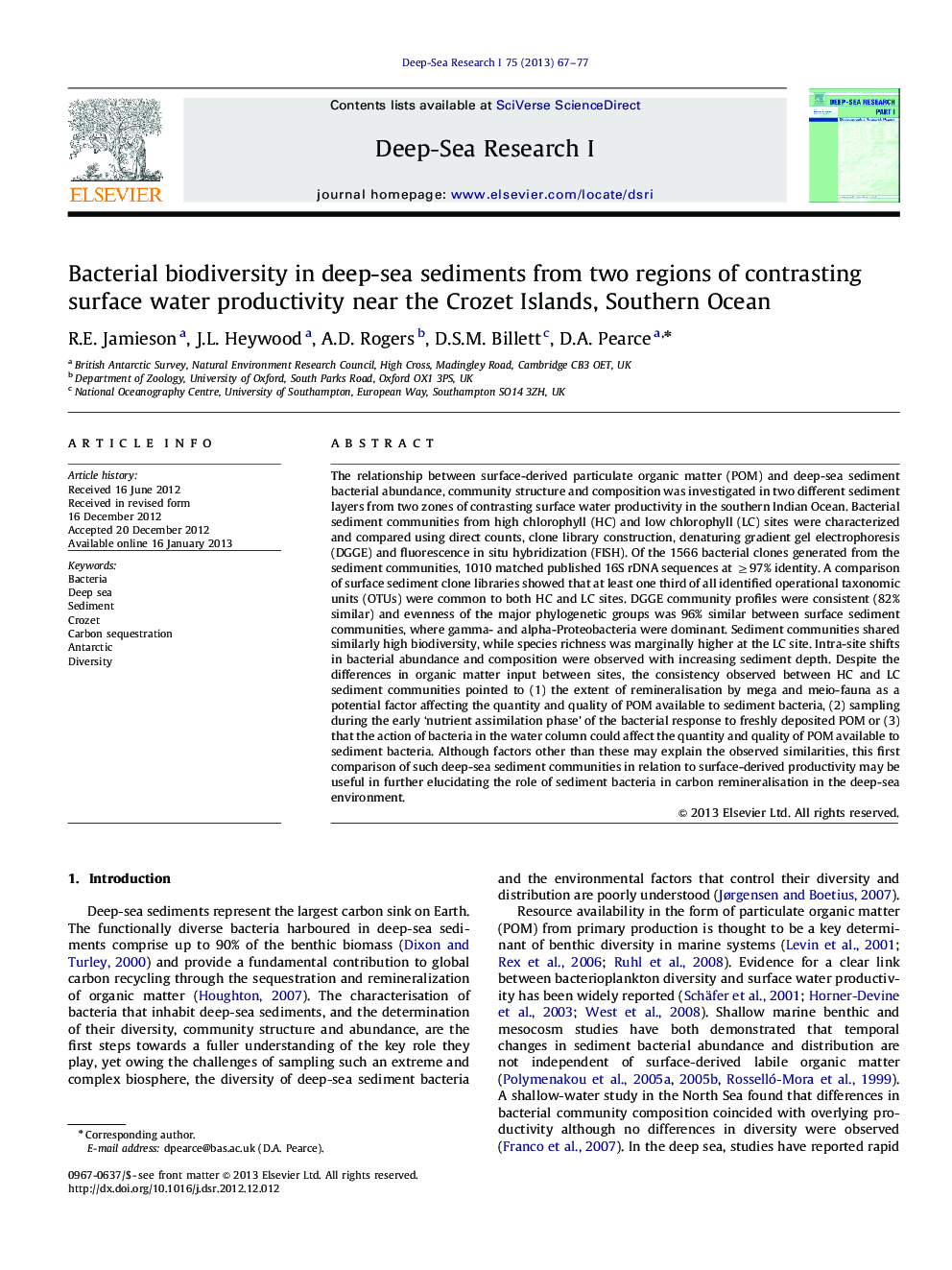| Article ID | Journal | Published Year | Pages | File Type |
|---|---|---|---|---|
| 4534619 | Deep Sea Research Part I: Oceanographic Research Papers | 2013 | 11 Pages |
The relationship between surface-derived particulate organic matter (POM) and deep-sea sediment bacterial abundance, community structure and composition was investigated in two different sediment layers from two zones of contrasting surface water productivity in the southern Indian Ocean. Bacterial sediment communities from high chlorophyll (HC) and low chlorophyll (LC) sites were characterized and compared using direct counts, clone library construction, denaturing gradient gel electrophoresis (DGGE) and fluorescence in situ hybridization (FISH). Of the 1566 bacterial clones generated from the sediment communities, 1010 matched published 16S rDNA sequences at ≥97% identity. A comparison of surface sediment clone libraries showed that at least one third of all identified operational taxonomic units (OTUs) were common to both HC and LC sites. DGGE community profiles were consistent (82% similar) and evenness of the major phylogenetic groups was 96% similar between surface sediment communities, where gamma- and alpha-Proteobacteria were dominant. Sediment communities shared similarly high biodiversity, while species richness was marginally higher at the LC site. Intra-site shifts in bacterial abundance and composition were observed with increasing sediment depth. Despite the differences in organic matter input between sites, the consistency observed between HC and LC sediment communities pointed to (1) the extent of remineralisation by mega and meio-fauna as a potential factor affecting the quantity and quality of POM available to sediment bacteria, (2) sampling during the early ‘nutrient assimilation phase’ of the bacterial response to freshly deposited POM or (3) that the action of bacteria in the water column could affect the quantity and quality of POM available to sediment bacteria. Although factors other than these may explain the observed similarities, this first comparison of such deep-sea sediment communities in relation to surface-derived productivity may be useful in further elucidating the role of sediment bacteria in carbon remineralisation in the deep-sea environment.
► Bacterial sediment communities from high and low chlorophyll sites were compared. ► Bacterial population densities were consistent. ► 96% similarity was found across major phylogenetic groups. ► DGGE community profiles were consistent. ► One third of all clones identified were common both HC and LC sites.
